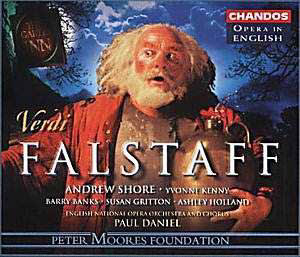 Composer: Wolfgang Amadeus Mozart
Composer: Wolfgang Amadeus Mozart
Works: Clarinet Concerto in A major KV 622, Concerto for Flute, Harp & Orchestra in C major KV 299, Flute Concerto No. 1 in G major KV 313, Flute Concerto No. 2 in D major KV 314, Oboe Concerto in C major KV 314, Bassoon Concerto in B flat major KV 191, Sinfonia Concertante for Oboe, Clarinet, Horn, Bassoon & Orchestra in E flat major KV 297, Horn Concertos in E flat major KV 417, KV 447, and various other horn works, Violin Concertos Nos. 1-5, Sinfonia Concertante for Violin, Viola & Orchestra in E flat major KV 364.
Performers: Harmen de Boer (clarinet), Marc Grauwels (flute), Giselle Herbert (harp), Peter-Lukas Graf (flute), Bart Schneemann (oboe), Ronald Karten (bassoon), Herman Jeurissen (horn), Emmy Verhey (violin), Concertgebouw Chamber Orchestra, English Chamber Orchestra, Netherlands Chamber Orchestra, Nieuw Sinfonietta Amsterdam, Amamti Chamber Orchestra, Slovak Chamber Orchestra, various conductors.
Recording: Various locations in the Netherlands and London, 1984-1996
Label: Brilliant Classics
Mozart’s concertos, particularly those for wind instruments and the violin, represent a vibrant tapestry of the Classical style, reflecting the composer’s innate genius and virtuosity as a performer. This first volume of Brilliant Classics’ ambitious complete Mozart edition showcases not only the dazzling array of wind concertos but also the exquisite violin concertos that are central to the repertoire. Each work encapsulates a facet of Mozart’s character—from the lyrical beauty of the Clarinet Concerto to the intricate dialogues found in the Sinfonia Concertante for Violin and Viola.
The opening Clarinet Concerto in A major KV 622 is a hallmark of the repertoire, executed with a nuanced touch by Harmen de Boer. The interplay between the soloist and the orchestral ensemble is commendable, particularly in the Adagio, where the emotional depth is palpable. De Boer’s phrasing captures the essence of Mozart’s lyrical lines, although there are moments where a more refined timbre could have enhanced the overall expressivity. The orchestral support, provided by the Nieuw Sinfonietta Amsterdam under Lev Markiz, balances well, allowing the clarinet’s voice to shine without overshadowing it.
Moving to the Flute Concerto in C major KV 299, one cannot overlook the inherent tension in the juxtaposition of Mozart’s personal ambivalence toward the instrument and the brilliance of the music itself. Marc Grauwels and Giselle Herbert deliver a performance that is both virtuosic and engaging. The Allegro is particularly impressive, with its lively orchestral colors and soaring flute passages creating an invigorating atmosphere. The Andantino serves as a reflective respite, showcasing the lyrical capabilities of the flute, though the orchestral backdrop occasionally risks overwhelming the solo line.
In the series of horn concertos, which are often regarded as some of Mozart’s most sophisticated works for the instrument, Herman Jeurissen’s performances offer a nuanced approach, albeit with some unevenness in sound quality. The Rondo from the E flat major concerto captures the rustic charm that is quintessentially Mozartian, with its playful motifs reminiscent of hunting calls. Yet, there are moments where Jeurissen’s tone lacks the warmth that one might expect from such expressively crafted melodies, resulting in a performance that, while technically competent, may not fully engage the listener emotionally.
The highlight of this collection, however, undoubtedly lies in the five violin concertos. Emmy Verhey’s interpretations breathe life into these essential works, particularly evident in the third concerto in G major KV 216. The Adagio, with its poignant melody, showcases Verhey’s ability to convey deep emotion, while the lively Rondeau encapsulates the effervescence that defines Mozart’s style. The Concertgebouw Chamber Orchestra provides a vibrant backdrop, demonstrating both precision and a keen understanding of the work’s inherent drama.
The Sinfonia Concertante for Violin, Viola & Orchestra KV 364 stands out as a remarkable synthesis of concerto and symphonic elements. The interplay between the violin and viola is masterfully crafted, even if the viola occasionally recedes into the orchestral fabric. The energetic final movement, with its playful exchanges, encapsulates Mozart’s ability to blend the virtuosic with the conversational.
Brilliant Classics’ inaugural volume in their complete Mozart edition is a commendable entry point for both seasoned aficionados and newcomers alike. While certain performances exhibit variability, the overall quality remains consistently high, and the sound engineering effectively captures the nuances of each instrument. This collection not only highlights the genius of Mozart but also invites listeners to immerse themselves in the rich textures of his orchestral writing. The set serves as a strong foundation for further exploration of Mozart’s expansive oeuvre.



